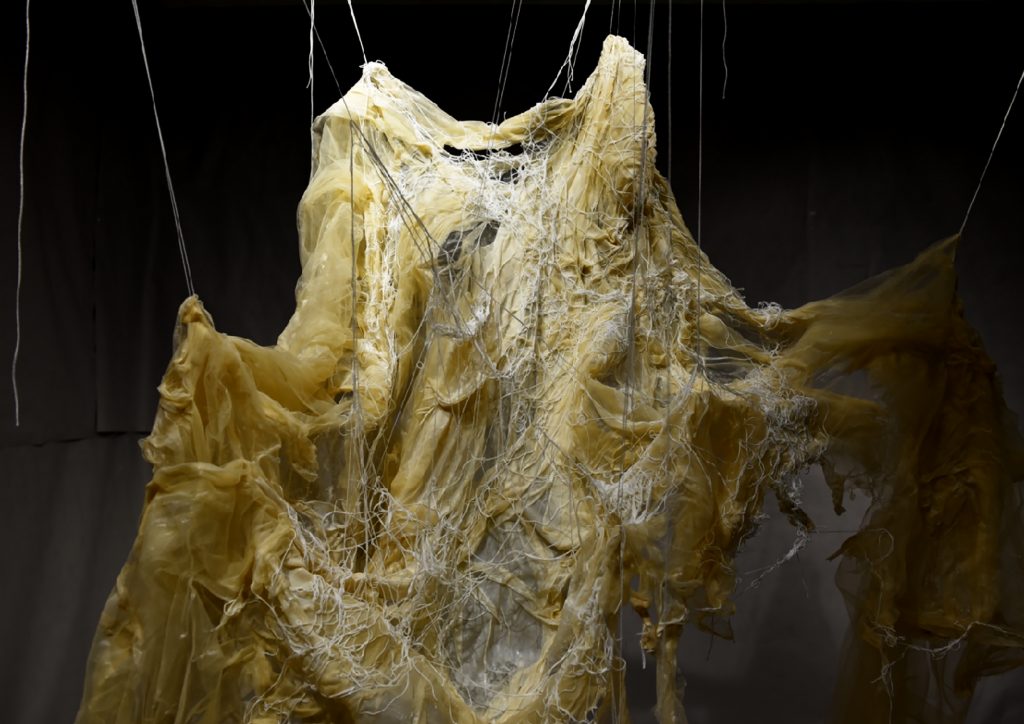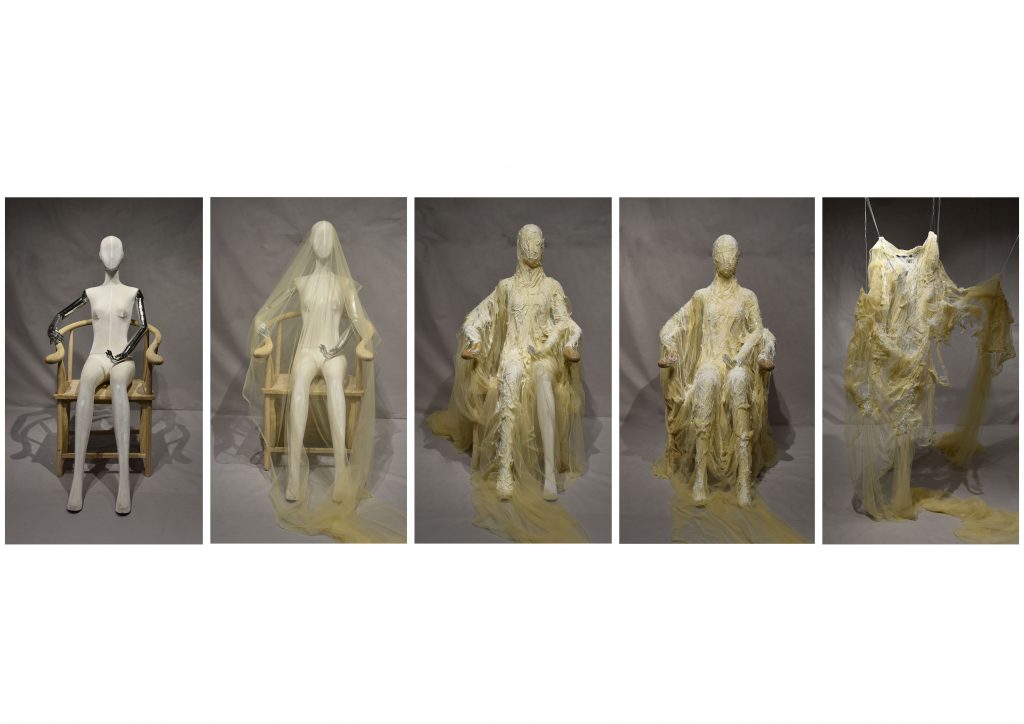In the third intervention, the use of symbols of the body and institution allowed participants to feel, for the first time, a strong connection between marriage and bodily constraint. However, I also realized that relying on images alone was still limited—they could provoke cognitive and emotional associations, but lacked a truly immersive experience. Therefore, I decided to take the intervention to a new level: through an installation, I aimed to materialize this “constraint” and let participants directly witness a body gradually being covered and restricted.
Elements used:
- Female mannequin (representing the female body)
- Chair (a seated posture that echoes both daily life and traditional scenes)
- Yellow fabric and threads (symbolizing entanglement, covering, and binding in marriage)
- Hanging structure (eventually expanding into a web, symbolizing the entanglement and struggles of the institution)
Intervention process:
- Begin with the female mannequin in a seated posture.
- Gradually cover and bind the body with layers of fabric and threads.
- Expand the process into a suspended web, symbolizing women’s struggles and invisible pressures within the marriage institution.
- Invite participants to observe and ask: “What relationship between marriage and the body do you perceive here?”


Participants’ feedback:
- Group A (big cities, highly educated, feminist awareness)
- Participant Vickey (23, Master’s student at UCL) said: “This reminds me of wedding dresses, but not the romantic white veil—it feels broken and imposed. It also makes me think of marionettes, as if women are manipulated by invisible strings and have lost their autonomy.”
- Another participant Q noted: “The threads feel like a tug-of-war. Marriage may seem like a relationship between two people, but behind it are families, parents, and society pulling the strings. That sense of entanglement makes me feel that marriage is both a connection and a restraint.”
- Group B (smaller cities, limited economic resources)
- Participant Yi (23, undergraduate) said her first reaction was “oppression.” “These threads make me feel that after marriage, a woman is not only bound to her husband but also by expectations from her family and society. I always thought of marriage as reliance, but this installation made me realize it could also be a trap.”
My reflection:
This intervention was more powerful than any of the previous ones. By watching a body gradually being bound, participants not only understood the “constraints of marriage” cognitively, but also felt it on a visual and emotional level.
This made me realize more clearly that the power of art is not only in recording and expressing, but also in its ability to render abstract institutional pressures tangible—turning them into experiences that can be directly seen and felt. Although such interventions cannot fundamentally alter participants’ logic of marital choice, they do make the notion of “constraint” no longer abstract, but something experienced simultaneously through body and emotion.
Leave a Reply